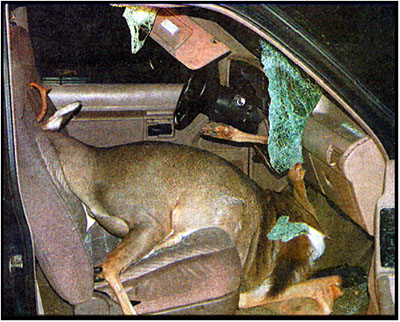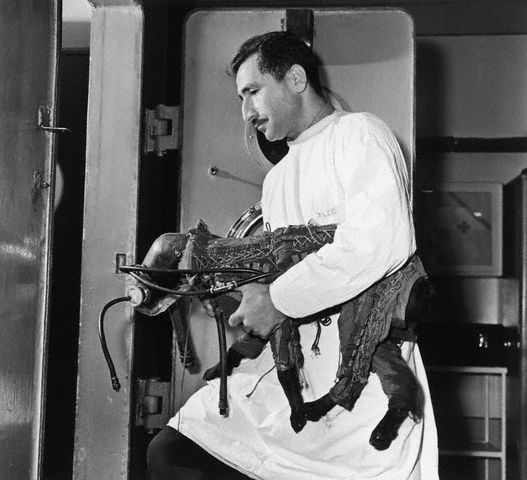 Black-tailed Godwit
Black-tailed Godwit
Remember, when we were kids and people said the birds "flew south" for the winter?
Well, believe it or not, that was about all we knew for a lot of species.
Birds disappeared flying south in the Fall and came back, flying north, in the Spring. Where these birds went, exactly, and what they did when they got there, was a bit of a mystery.
Beginning in the 16th Century or so, some bird owners (pigeon fanciers and falconers mostly) began banding or ringing the legs of select birds to establish ownership.
The first record of a metal band attached to a bird's leg was in 1595, when one of Henry IV's banded Peregrine Falcons was lost in pursuit of
a bustard in France. It showed up the next day in Malta, 1,300 miles away!
In the early 19th Century, the world began to get a glimpse into the scope of avian winter migrations, thanks to an arrow in the neck.
Atlas Obscura tells the story:
Until the 19th century, the sudden annual disappearance of white storks each fall had been a profound mystery to European bird-watchers. Aristotle thought the storks went into hibernation with the other disappearing avian species, perhaps at the bottom of the sea. According to some fanciful accounts, “flocks of swallows were allegedly seen congregating in marshes until their accumulated weight bent the reeds into the water, submerging the birds, which apparently then settled down for a long winter’s nap.” A 1703 pamphlet titled “An Essay toward the Probable Solution of this Question: Whence come the Stork and the Turtledove, the Crane, and the Swallow, when they Know and Observe the Appointed Time of their Coming,” argued that the disappearing birds flew to the moon for the winter.

On May 21, 1822, a stunning piece of evidence came to light, which suggested a less extra-terrestrial, if no less wondrous, solution to the quandary of the disappearing birds. A white stork, shot on the Bothmer Estate near Mecklenburg, was discovered with an 80 cm long Central African spear embedded in its neck. The stork had flown the entire migratory journey from its equatorial wintering grounds in this impaled state. The Arrow-Stork, or Pfeilstorch, can now be found, stuffed, in the Zoological Collection of the University of Rostock. It is not alone. Since 1822, some 25 separate cases of pfeilstorches have been recorded.
What happened next? Well, quite a lot.
The 19th Century was a period of explosive scientific discovery, and people began to move beyond simple banding to establish ownership, to banding as a method of tracking birds across time and space.
Among the first to step forward in the name of Science was John James Audubon, who attached small ringlets of silver wire to the legs of a brood of Phoebes near Philadelphia so he could firmly establish that birds raised in one area were the same ones who later returned to nest in that same area.
In 1899, Hans Mortensen, a Danish school teacher, took the idea of bird-banding one step farther, and began banding wild birds with metal rings that had his name and address on them. It was Mortensen that invented the system of bird banding we use today, though it should be said that it was the Smithsonian Institution, here in Washington, D.C., which
really popularized bird-banding, and made it an avenue of mainstream scientific inquiry.
For about 100 years, bird banding was how we tracked bird migrations around the world, and to tell the truth, it was not that great a system.
In a world of billions of birds, only a small fraction-of-a-fraction were ever going to be banded, and most of these were ducks or geese which had an obvious economic value. Smaller birds of no obvious value were much less likely to get banded, and only those birds shot or netted ever had any hope of having their identifications seen, much less returned to the proper data-keeper.
The result: until only a decade or so ago, we still had a very imperfect knowledge of where birds went when they "flew south" for the winter, and we knew even less about where they stopped and fed along the way.
The good news is that in the 1990s, the process of electronic miniaturization progressed to the point that scientists could begin to put transmitters on really large birds like hawks and cranes, and data from those transmitters could be uploaded to satellites. Today, the science of miniaturization has progressed to the point that it's possible to put a transmitter on a hummingbird --
even a dragonfly -- although we still need an airplane or car to follow on behind the smallest of transmitters.
It is hard to overstate how important electronic tracking is to wildlife management and protection. A small story, however, might give a clue.
Three of the very first miniature electronic tracking transmitters capable of linking up to a satellite were attached to Swainson's hawks back in 1994. Within a few days, two of the transmitters conked out, but the transmitter on the third bird retained power and showed the hawk traveled from southern Canada down the American Midwest into Mexico, Guatemala, Costa Rica, and past Ecuador into the Pampas region of Venezuela.
Scientists quickly scurried off to see if they could locate the animal.
What they found in Argentina was both amazing and disturbing.
The amazing part was that Swainson's hawks, which are solitary hunters in North America, assembled into large communal flocks of as many as 7,000 birds on their winter hunting grounds.
The disturbing part was that in Argentina Swainson's hawks lived on swarms of locust-like grasshoppers, which were being systematically poisoned by organo-phosphate pesticides.
The bug spray, in turn, was killing off the Swainson's hawks in droves.
As they drove into the area where the hawk's signal had last been heard from, scientists were alarmed to find thousands of hawks already dead under their roosts.
To make a long story short, that year 25 percent of all the Swainson's hawks in the world were killed by pesticides in Argentina -- a phenomenon that would never have been known had it not been for wildlife tracking telemetry.
The good news is that by switching to different types of pesticides, Argentina's farmers were able to sharply reduce grasshopper infestations while doing little serious harm to wildlife --a "win-win" for all sides.
As you might suspect, the brave new world of wildlife transmitters is still giving us a lot of new information, and great stories as well.
For example, one of fifteen Black-tailed Godwits released in the Friesland area of the Netherlands last Saturday
arrived in Senegal in West Africa on Tuesday morning. The distance of 2,500 miles (4,000 kilometres), was covered by the bird in two days of nonstop flying.
Today, scientists are able to track bird populations around the globe, and load this information into graphics-based data bases so the general public can follow these epic migrations.
And it's not just birds that migrate, is it?
On every continent mammals, birds, fish and even insects migrate extraordinarily long distances.
It's not just Monarch butterflies that fly south for the winter for example -- it's a lot of dragonflies as well.
And it's not just herring and salmon that migrate out of oceans and up our rivers and streams -- it's perch and eels too. Out in the oceans, shark, tuna, whales, penguins, and sea turtles are swimming vast distances in never-ending seasonal circles, as they have for millions of years. On land we have long-distance migrations by caribou, bison, pronghorn antelope, elephant, wildebeest, and zebra.
How do the animals find their way? No one is quite sure.
No doubt there are a lot of factors that help guide them -- the position of the sun, wind, smell, temperature, sound, and
visual landmarks, for starters. We know, for example, that when pigeons get closer to home, pigeons will actually follow roadways, same as you and I.
Migrations at night, when most birds fly really long distances, however, may be due to an internal magnetic compass that is hard-wired into the brain and
working off of a bit of superoxide.
And it's not just birds that have this bit of electro-chemistry firing off in their brain --
bats do too.
And if bats (mammals) have electro-magnetic compasses in their brain, why not fish?
The main benefit of wildlife transmitters, of course, is that by tracking animals -- so many of which move about only at night -- we are better able to protect vital wildlife and ancient migration corridors.
That's a benefit for everyone -- the wildlife, hunters, and Mother Nature included.
On a more personal level, of course, the tremendous strides made in wildlife transmitters over the last two decades, have been an enormous benefit for those of us who engage in highly-skilled primitive hunting with dogs, hawks, falcons, and ferrets.
Yes, hawks and falcons are still lost rather routinely, but
falconry transmitters and Yaggi locators offer some hope of recovery.
In the world of terriers and ferrets, the development of
small low-frequency transmitters means long layups underground and long and dangerous digs are less frequent than they once were.
Even houndsmen and pet owners have benefited, thanks to tracking collars to serve their
various needs.




 took over the patio. Craig and Tom even went down to the basement with the waitress to bring up extra tables ... we most certainly gave them a Sunday business boost. It was so good to see everyone --- from Mass, New York and all sides of CT, we all converged over spiciness and shrimp crackers. I laughed, a lot, as is usual with our crew and just basked in the sun and the warmth of our friendship. And the yellow curry with three kinds of tofu? Amazing.
took over the patio. Craig and Tom even went down to the basement with the waitress to bring up extra tables ... we most certainly gave them a Sunday business boost. It was so good to see everyone --- from Mass, New York and all sides of CT, we all converged over spiciness and shrimp crackers. I laughed, a lot, as is usual with our crew and just basked in the sun and the warmth of our friendship. And the yellow curry with three kinds of tofu? Amazing. 







































